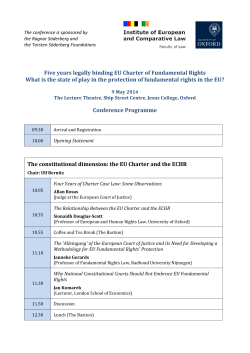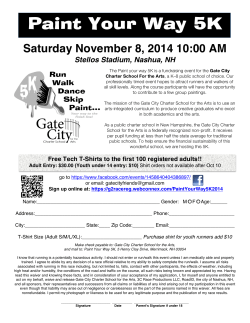
File - Denison Middle Civics
Name: _______________________________ Period#: _______ Homework Weeks of April 6-17, 2015 7th Grade Civics – Mr. Albandoz/Gillette (DUE DATE: Friday, April 17, 2015) Instructions: 1. Answer the following questions by using a separate sheet of paper. 2. Use Government Alive! Textbook or www.teachtci.com website. If in need of guidance, use our class website www.denisonmiddlecivics.weebly.com (instructions on how to access the teachtci website are there). 3. Return this homework assignment, along with this paper, answered and completed by its due date. Chapter 17 (Chapter 21 Online): Creating American Foreign Policy Section 1: Introduction 1. What is Foreign Policy? 2. Why did U.S.-Cuban relations changed abruptly? How did the U.S. respond to Fidel Castro’s nationalization of Cuba’s private property? Section 2: The Basic Goals of U.S. Foreign Policy 1. What is the most important job of any national government? 2. What is a visa? 3. What is the second goal of U.S. foreign policy? 4. What is globalization? Section 3: The “Soft Power” Tools of Foreign Policy 1. What is diplomacy? What is an ambassador? 2. What are high-level meetings by national leaders called? 3. List the five major U.S. assistance programs categories and explain each one briefly. Section 4: The “Hard Power” Tools of Foreign Policy 1. What are “hard power” tools designed for? 2. What are sanctions? Section 5: The Makers and Shapers of Foreign Policy 1. Who directs the administration of foreign policy as the head of a large foreign policy bureaucracy? 2. What is Congress’ most important tool for influencing policy? Section 6: How World Views Shape Foreign Policy 1. What is the fifth world view that emerged after September 11th, 2001? What does people holding this worldview believe in? 2. List the other four worldviews and explain each one’s belief. Chapter 18 (Chapter 22 Online): Confronting Global Issues Section 1: Introduction 1. What is the difference between intergovernmental organizations (IGOs) and nongovernmental organizations (NGOs)? Give examples of both types of organizations. Section 2: The United Nations 1. The founding countries adopted a constitution for the new IGO known as the United Nations Charter. What are the 4 main goals for the UN that are identified in the Preamble to the UN Charter? 2. What are the main roles of the following organs/agencies in the UN? Security council Secretariat International Court of Justice International Monetary Fund and World Bank Economic and Social Council General assembly3. What is the Millennium Declaration? How does the UN plan on reaching this objective? Section 3: Intergovernmental Organizations 1. Through intergovernmental organizations (IGOs), groups of nations cooperate to achieve common objectives. Analyze the interests and goals of the following IGOs: Organization of the Petroleum Exporting Countries (OPEC) North Atlantic Treaty Organization (NATO) Southeast Asian Nations (ASEAN)2. What are some of the benefits (pros) and downsides (cons) that IGOs offer member nations? Section 4: Nongovernmental Organizations 1. What are least developed countries (LDCs)? How do nongovernmental organizations (NGOs) benefit LDCs? 2. What are some things that NGOs do well/not so well? Section 5: Protecting Human Rights 1. The basic rights that all human beings should enjoy are defined in a landmark UN document known as the Universal Declaration of Human Rights. What fundamental rights are included? 2. Do you agree that the right to own property and the right to work are human rights? Why or why not? 3. What are conventions? Lists 3 groups of people that benefit from conventions? Section 6: Tackling Environmental Issues: A Focus on Climate Change 1. What is global climate change? 2. What is the greenhouse effect? 3. What are some possible side effects of rising temperatures on Earth? 4. What is a protocol? What is the goal of the Kyoto Protocol?
© Copyright 2025













